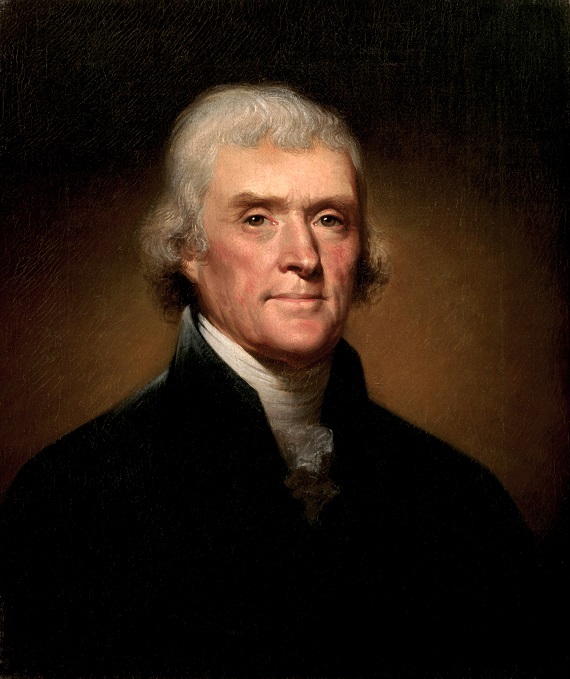
In 1993 the Washington Post published an article on research being conducted by an accomplished Richmond lawyer named Robert Cooley. According to this article, among many additional details in regard to the subject, Cooley had been working with scholars for years to examine land deeds owned by the descendants of Thomas Jefferson, for the purpose of investigating specifically what land had been inherited and then developed by these grandchildren of Jefferson as the City of Washington D.C. expanded.
His statement was that any such inheritance conveniently excluded another set of descendants, whom he, himself, was claiming to stand among. According to family lore, Jefferson and his slave, Sally Hemings, had a long-standing relationship. Out of that relationship came at least five, or perhaps six children. From those children descended over the course of time some 1800 people now scattered around the nation, who have yet to be recognized.
Cooley states that attempting to acquire money from these people was not the objective with this investigation. All that was being requested, according to Cooley, was an inclusion in the family cemetery of Jefferson for the 1800 descendants. The note of deeds to potential inherited land being investigated, however, is worthy of additional questioning.
With this push came a call for the legitimate descendants of Thomas Jefferson to defend their position that no such relationship ever occurred. While heavy research into the historical record failed to yield any hard clues, there were slight suggestions of possibility. Sally Hemings was the half-sister of Jefferson’s deceased wife, Martha Jefferson. She was 30 years younger than Jefferson. Jefferson had promised his dying wife that he would not marry again. At 16 Sally was chosen by Mary Jefferson, his younger daughter, to accompany her to Paris, France, after her sister, Lucy Jefferson, died. Jefferson had diplomatic business to attend while there.
Many scholars claim this trip initiated the relationship that sustained itself for more than 30 years. The critics would find holes in these types of claims at the outset, because it could never be determined where Sally specifically stayed while she resided in Paris. By all accounts, Hemings resided in a convent with his daughter, Mary. Thus, no evidence exists that Jefferson ever had a relationship with any woman after the death of his wife, slave or otherwise, much less fathering six children with them.
While scholars continue to ponder the matter, evidence against these claims continues to pile up. According to The Thomas Jefferson Foundation, no witnesses existed to the relationship, even though reports indicate that up to 50 visitors at any given time frequented Monticello while Jefferson was President. Claims are made that Jefferson was on the premises of Monticello during every deduced conception time of Sally’s children. “The truth is, he wasn’t,” says UVA Law Professor Bob Turner.
In 1998 a DNA test was conducted on Hemings and Jefferson’s line of descendants. A match was found in the Eston Hemings line with the Jefferson line, although no specific match linked directly to Thomas Jefferson could be determined from more than eight possibilities. Yet this evidence was hailed by many as being conclusive, that Jefferson fathered Sally Heming’s six children. When the personalities of Jefferson’s brothers were examined and their presence on the estate determined in lieu of its frequency, one who stood out was Jefferson’s youngest brother, Randolph Jefferson.
Randolph frequented the estate on a regular basis, as did his two sons. One of his sons would have ranged in the ages of 14 to 21 during the time that Hemings’s children were born. Randolph was also recorded to have the personality of being “simple minded,” if not one of being an outright lout at times. He also was known to play the fiddle and dance frequently with the slaves, while Thomas Jefferson did not. While Thomas Jefferson was gone from the estate for long periods of time, Randolph and his sons are recorded as staying for extended periods of time. Randolph would have been ten years closer to the age of Sally Hemings, if it was not one of his older sons who fathered Easton.
While Sally Hemings herself is hailed as being cultured, nothing in the record reveals that she was even literate. She was described as being unusually attractive by a number of different observers, however. James Thompson Callender described her as “a harlot,” a “seductress” out for her own gain. The DNA investigation could only link the Jefferson line to one single child of Sally Hemming, Eston Hemings. Who then, fathered the other five, if they were light skinned to the point of being nearly white, as reports from the time have indicated?
Other considerations can also be observed, and possible conclusions deduced. Sally Hemings was only 35 years old when her last child, Eston, was born. By that time, she was an experienced lady, in the prime of life. Her children were apparently born in a sequence of regularity. In other words, if it were not the result of having a series of relationships with multiple men, then some man certainly possessed the stamina and ability to keep up with Hemings’s surging youthful yearning.
When Easton was born, Jefferson was in his mid-sixties. His brother, Randolph would have been in his mid-fifties. While it may have been possible for Jefferson to have kept Hemings contented, it would have been more possible for Randolph. However, Randolph’s 24-year-old son, Robert Lewis Jefferson, or Peter Field Jefferson (13 – 22-year-old) would have been at the high prime of male sexuality, and could have easily kept up with any of Hemings’s youthful demands. It would not be out of context to consider that Hemings could have maintained a relationship with both young men simultaneously. From all appearances, no score ever attempted to attach any strings to her.
In addition to the Jefferson boys, Hemings could have also maintained a number of additional relationships by literally negotiating her own encounters with Jefferson’s accomplished and wealthy associates, who were known to pass time at the mansion estate, even when Jefferson was away on business. From all records of the day, Jefferson seems to have given Hemings free rein of the mansion interior and chief supervisory status over subordinate house servants. In effect, one could label her status on the estate as being Chief Stewardess. It may be safe to conclude that Sally Hemings was only classified as being enslaved on paper, since she was in possession of the opportunity to emancipate herself on numerous occasions, yet chose not to do so.
Certainly, Randolph would have been too weak to resist, and the over active hormones of his young late teen aged son would have virtually propelled him into Hemings’s embrace, if any sort of hint appeared to suggest a possibility for secret carnal action. Developing a connection with the son of a brother, who Jefferson was known to welcome and warm up to, could have easily opened a direct line to Jefferson himself, who was recorded as being rather aloof when in the company of house servants.
While Jefferson probably would not have approved, he was away from the estate for such enduring periods of time and so occupied with business affairs, that he would have rarely even noticed. When people in the surrounding area made condemning remarks in regard to their own observations of Hemings and her children, Jefferson’s recorded response was to only smile and ignore them, walking on and leaving these people with a whole new series of yet to be answered questions.
When the hard facts are evaluated, Thomas Jefferson remains innocent in these slanderous charges of carnal impropriety and outright debauchery. Since the Jefferson line has been linked back to only one of Hemings’s children, then the suggestion in it is that she was sexually active with a multiplicity of partners. The reported whiteness of these children confirm that these partners were in all probability white men. Since Jefferson’s associates were noted as being on the premises in large numbers throughout his entire time of presidency, and outside reports of the day labeling Hemings as being a “harlot,” not to mention the historical detail of Jefferson granting her free reign of the home and estate, then it would be fair to conclude that much more was going on with Hemings in Thomas Jefferson’s absence from home, than we, of our own time, have been allowed to consider, let alone speak publicly of. This is political correctness run amok, and Jefferson deserves better, as does real historical inquiry.






